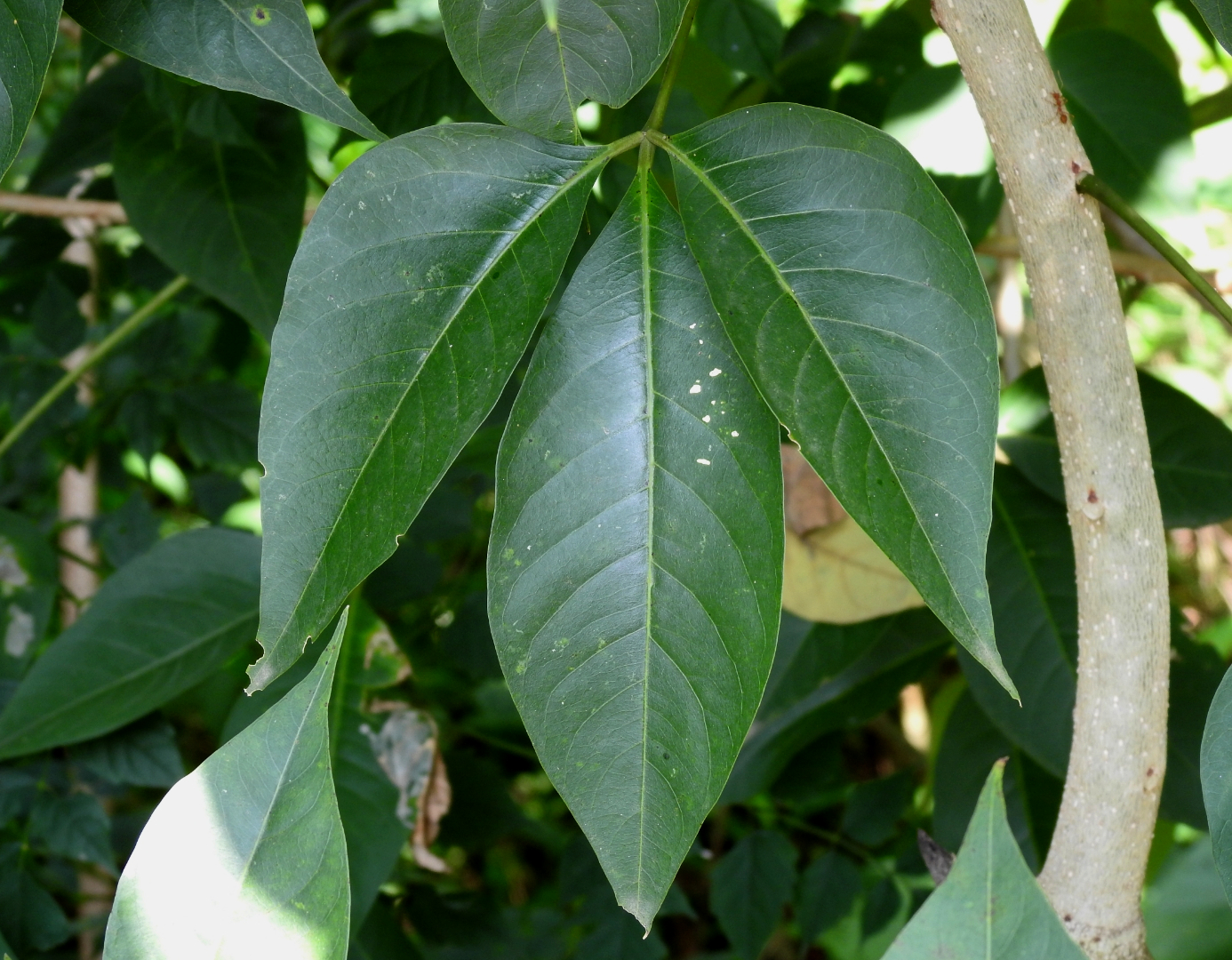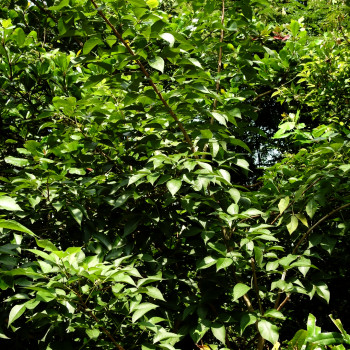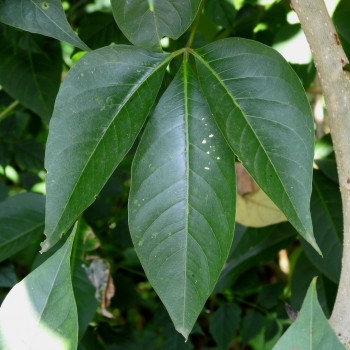Neermathalam

Scientific Name :
Crataeva magna (Lour.) DC.
Synonym(s) :
Capparis magna Lour.
Local/Common name(s) :
Neermathalam
Family :
Capparaceae
Habit :
Tree
Flowering/Fruiting Time :
January-July
Habitat :
River banks in semi-evergreen forests
Endemic :
No
Status (IUCN) :
Distribution :
India, Bangladesh, China, Myanmar, Laos, Cambodia, Vietnam, Malaysia, Indonesia, Tropical Africa; Kerala: throughout
Nativity :
Indigenous
Uses :
Medicine, Food
Description (Morphology) :
Trees, to 10 m high, bark 2-3 mm thick, surface grey, smooth, longitudinally wrinkled. Leaves alternate, digitately trifoliate; rachis 4-12 cm long, slender, grooved above, glabrous; petiolule 4-7 mm long, slender; leaflets unequal, ovate, ovate-lanceolate or broadly elliptic, base acute, or subacute, apex acute or acuminate, margin entire, glabrous, coriaceous; lateral nerves 9-15 pairs, slender, parallel, prominent, intercostae reticulate, faint. Flowers bisexual, creamy white, in terminal corymbs; pedicel to 5 cm long. Sepals 4, 3 mm long, free, oblong, adnate to the lobed disc. Petals 4, ca. 2 cm long, creamy white, often tinged with purple, long-clawed, obovate. Disc incurved, nectariferous. Stamens many, free, longer than the petals, inserted at the base of gynophore; anthers basifixed, filaments spreading. Gynophore 4-5 cm long at anthesis, slender; ovary superior, ellipsoid, 1-[2]-celled, ovules many; stigma sessile, capitate. Fruit a berry, globose or ovoid, yellowish-grey, rind woody, scurfy; seeds brown, embedded in pulp.




